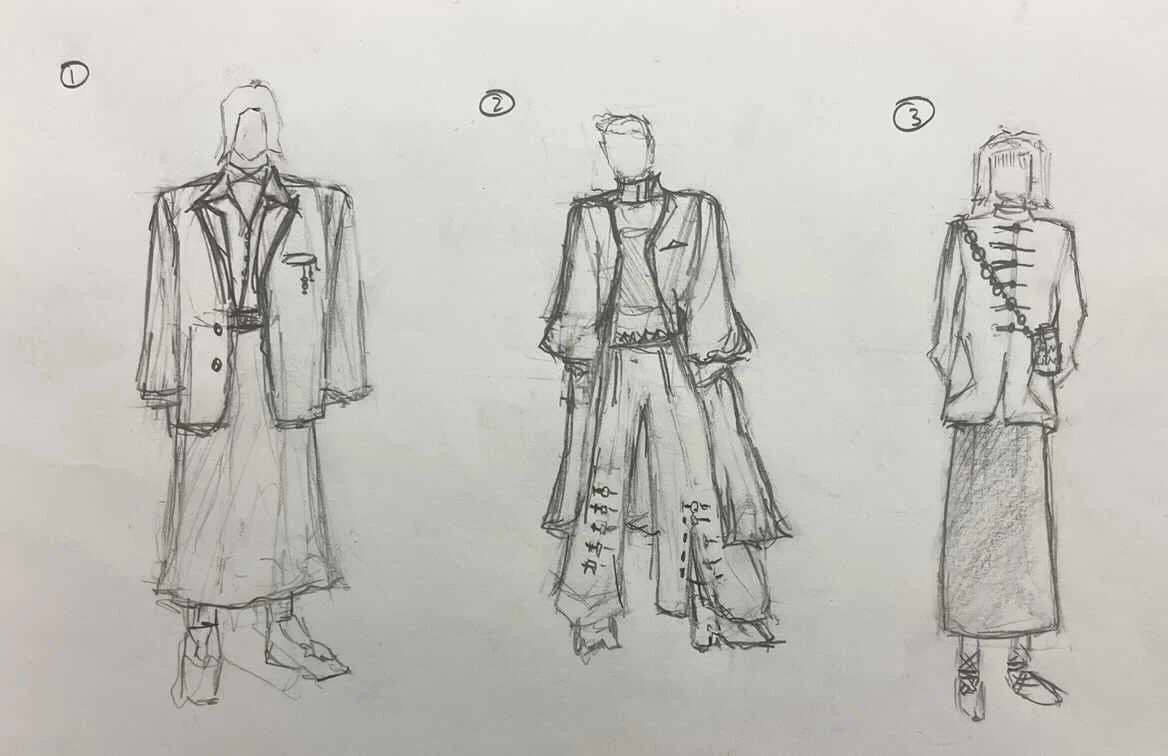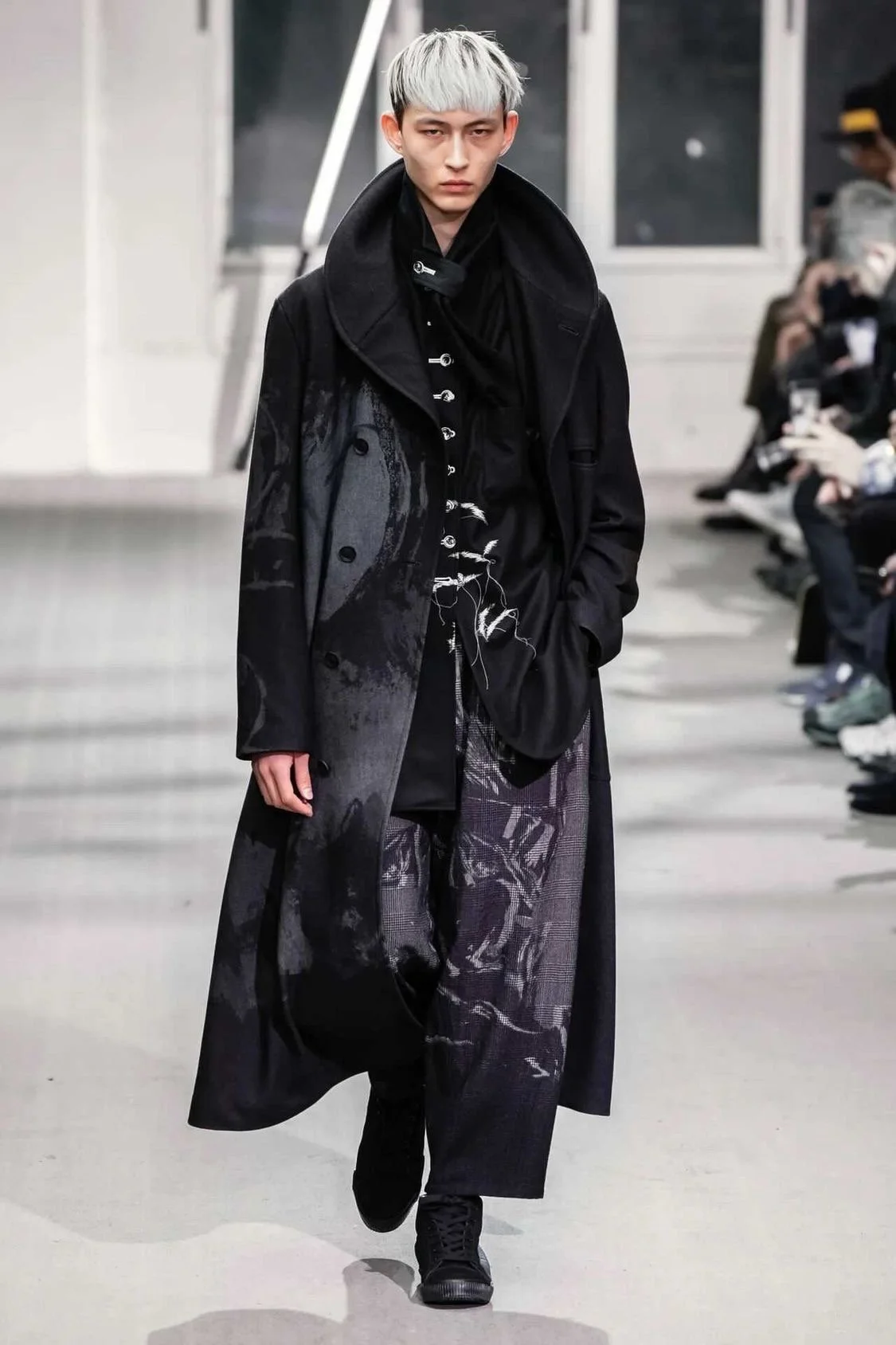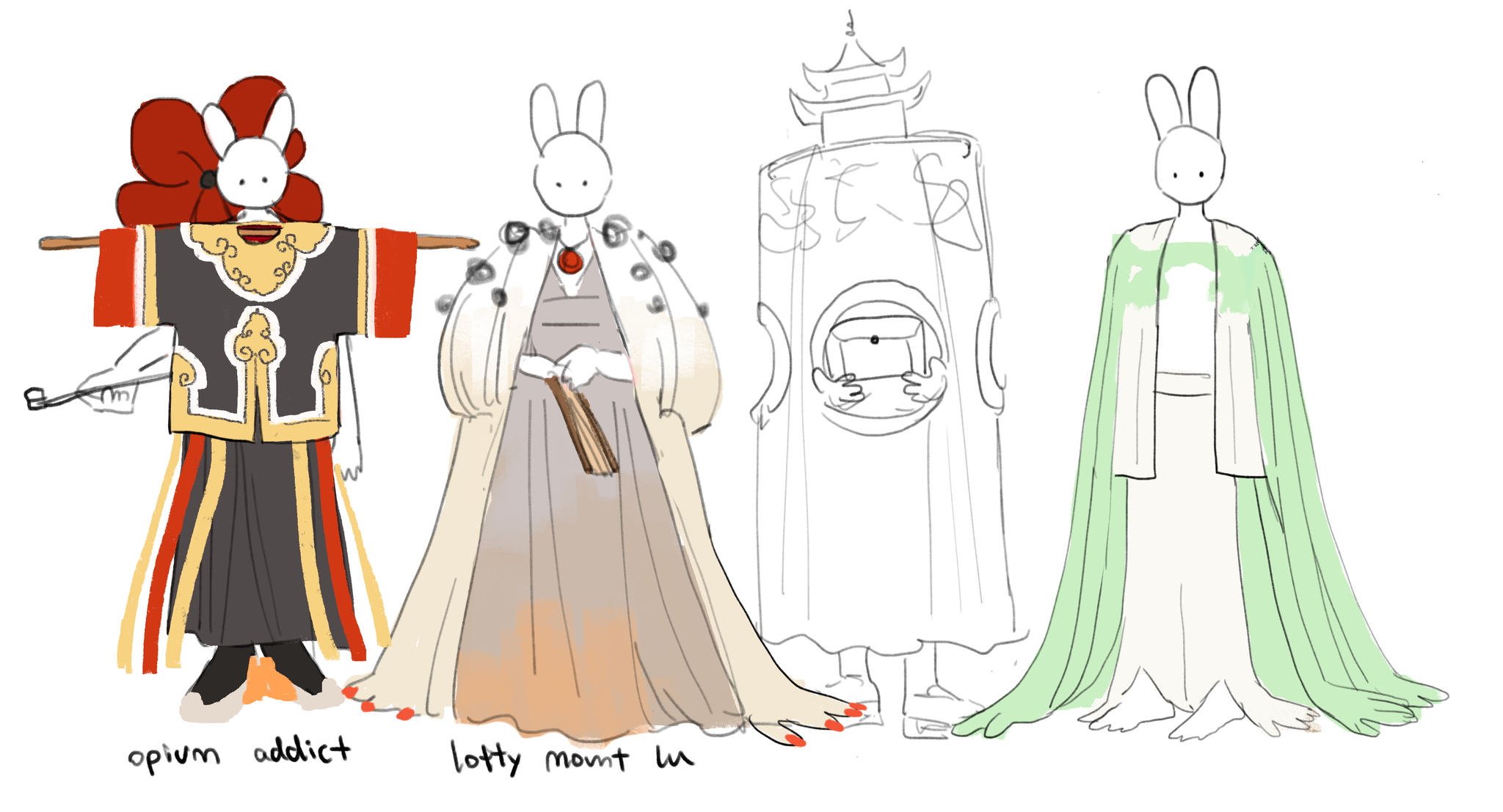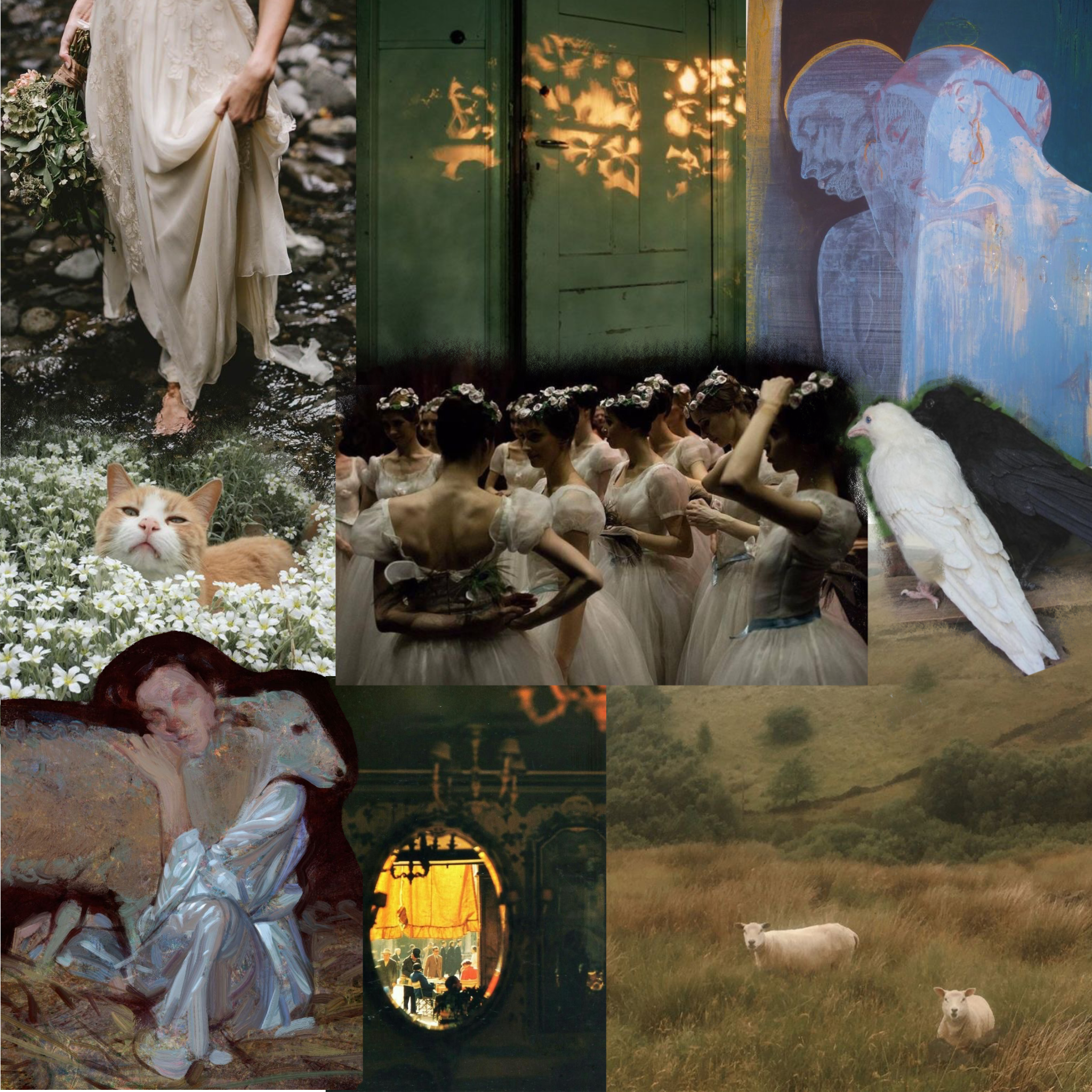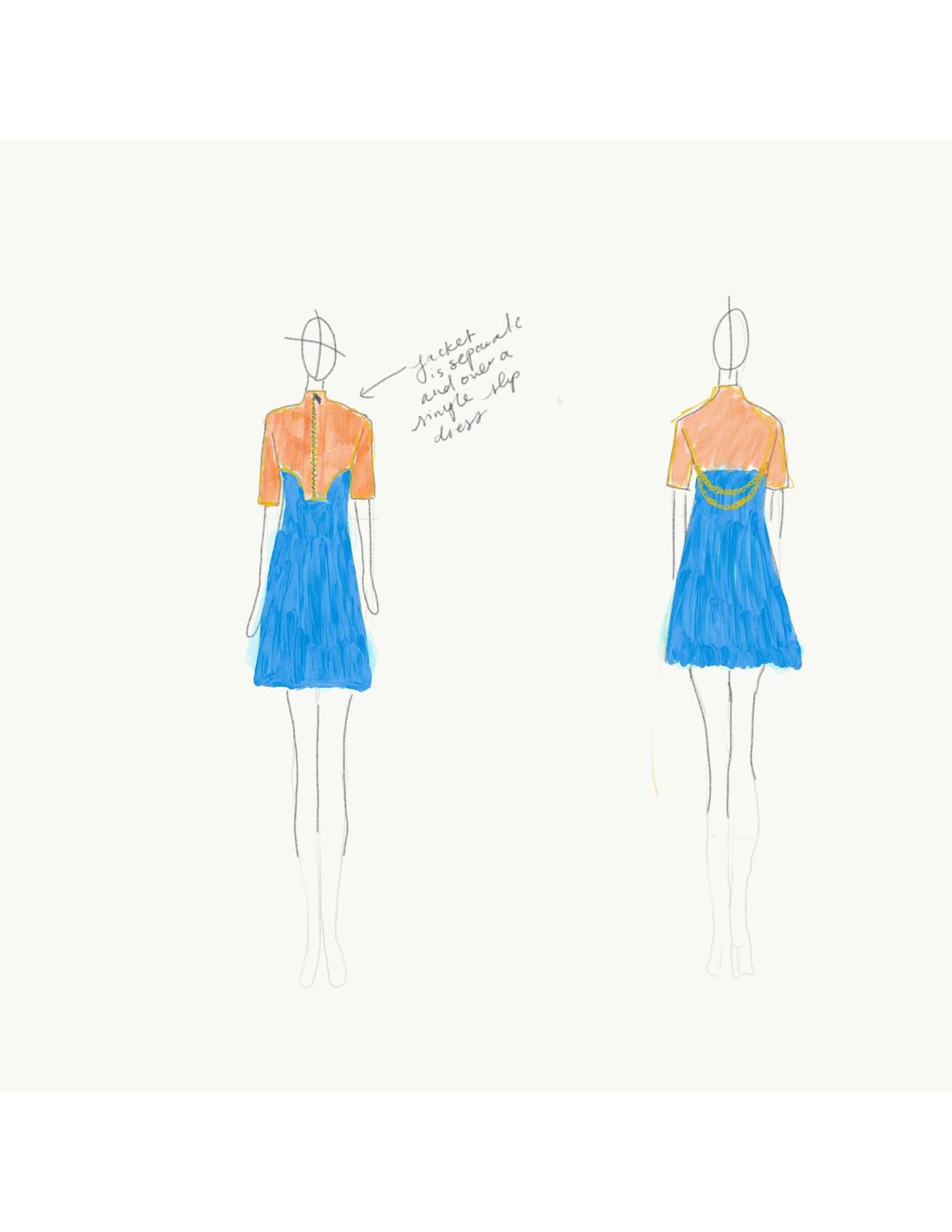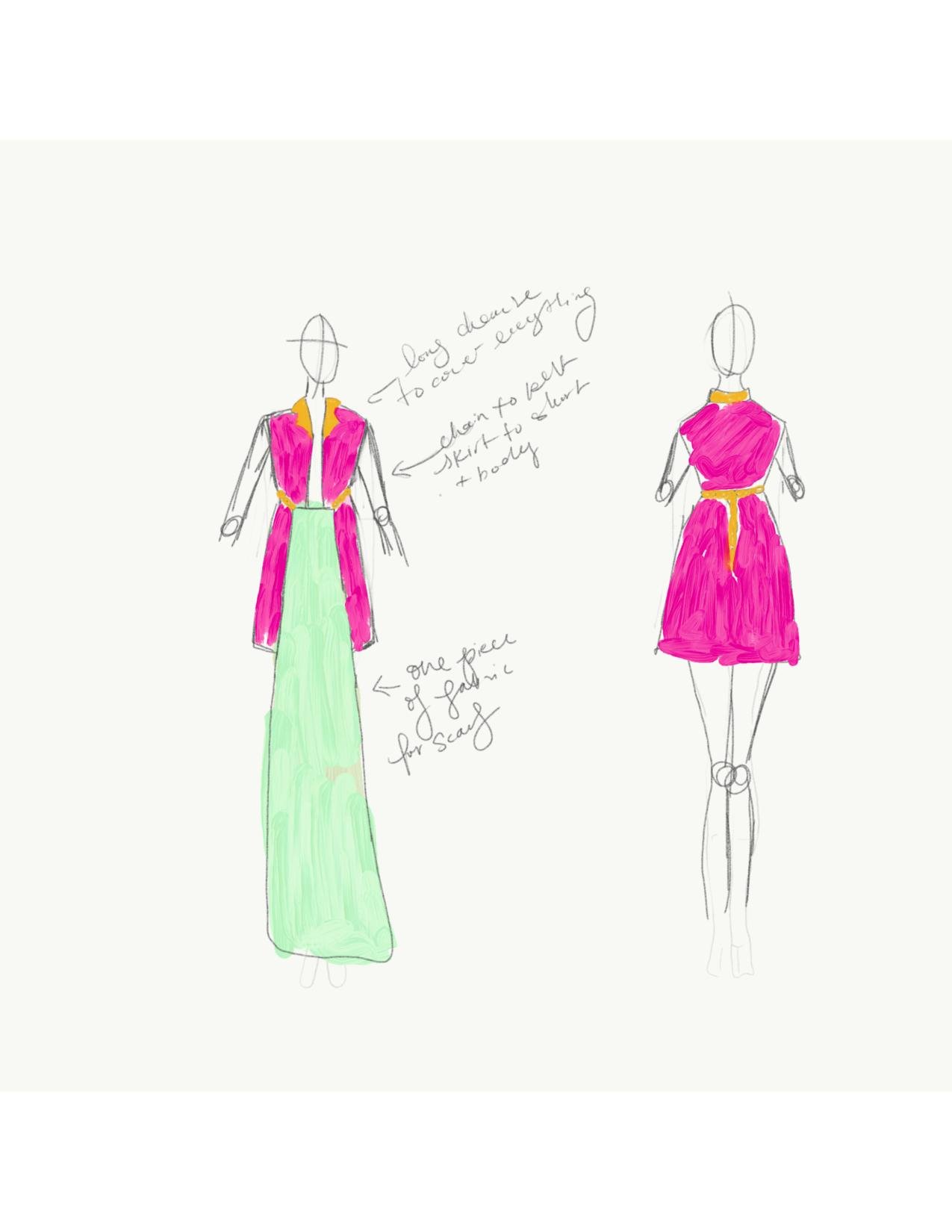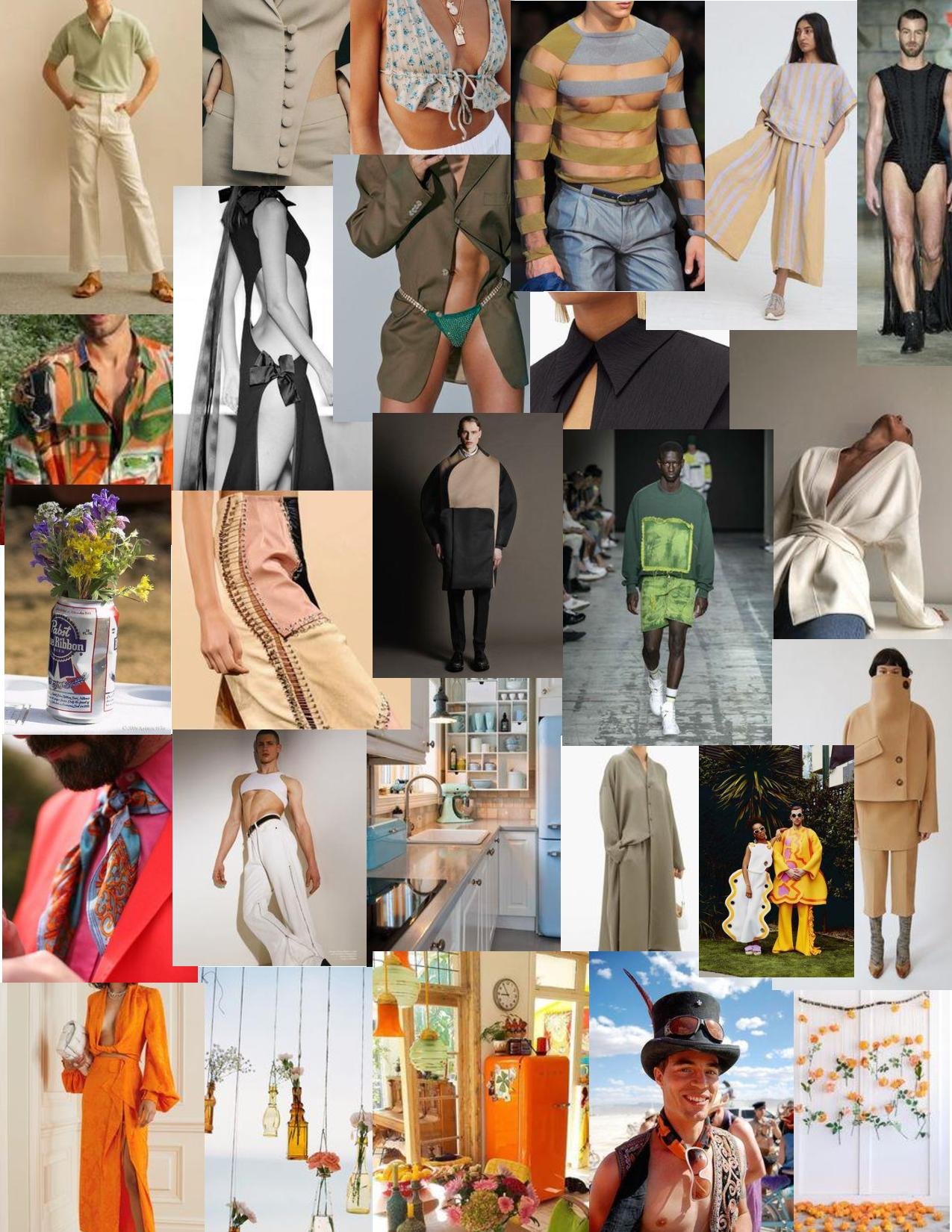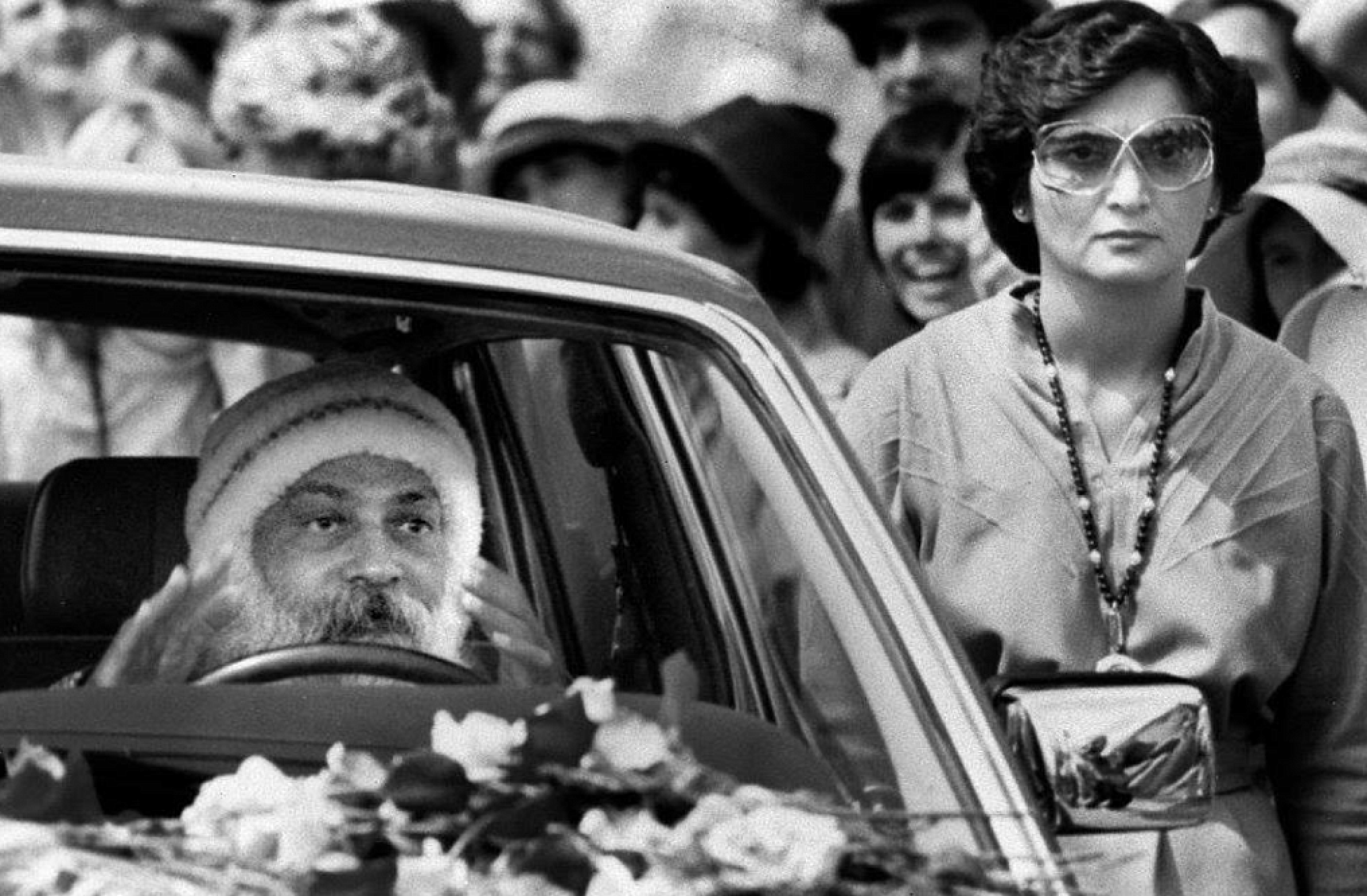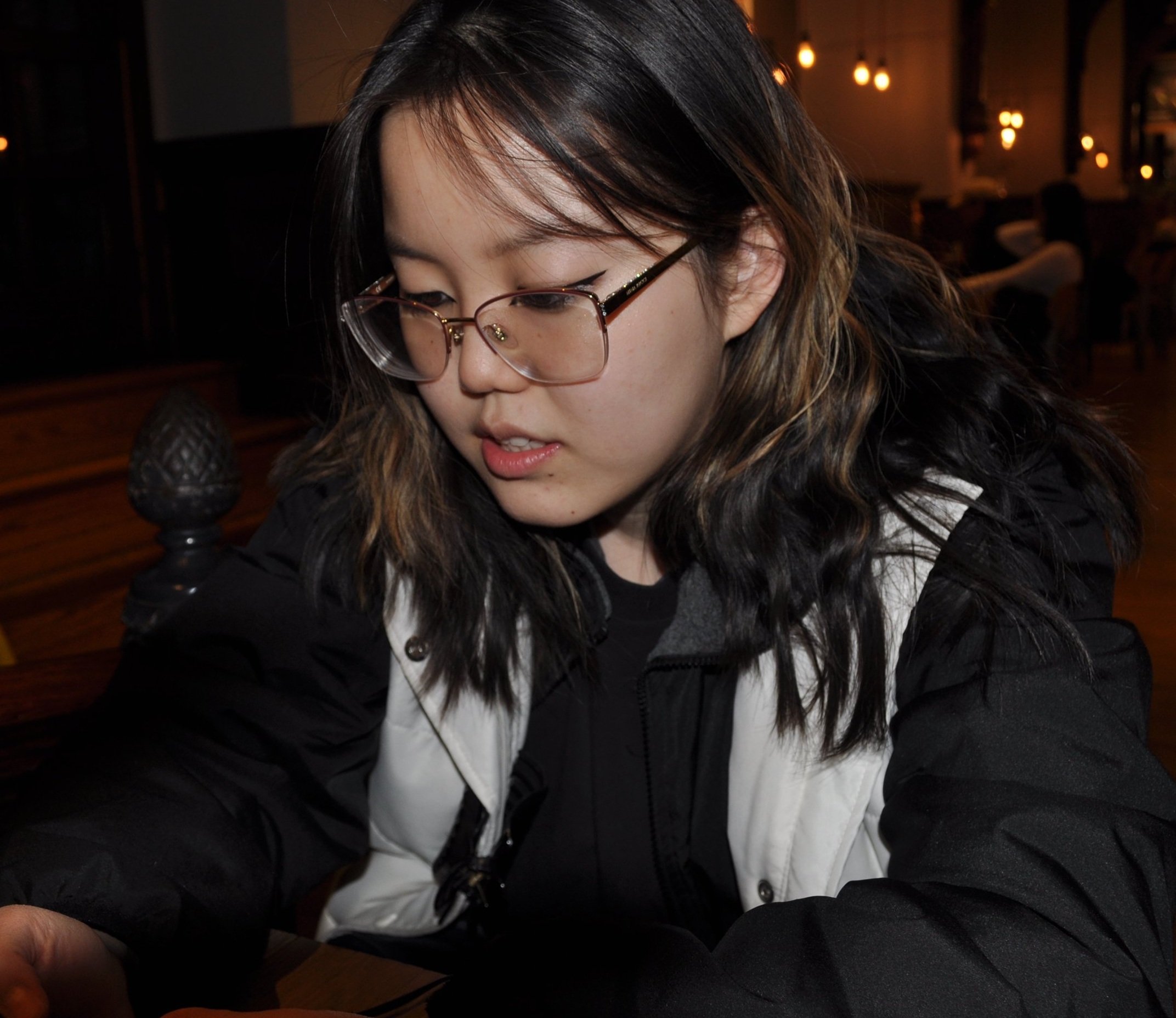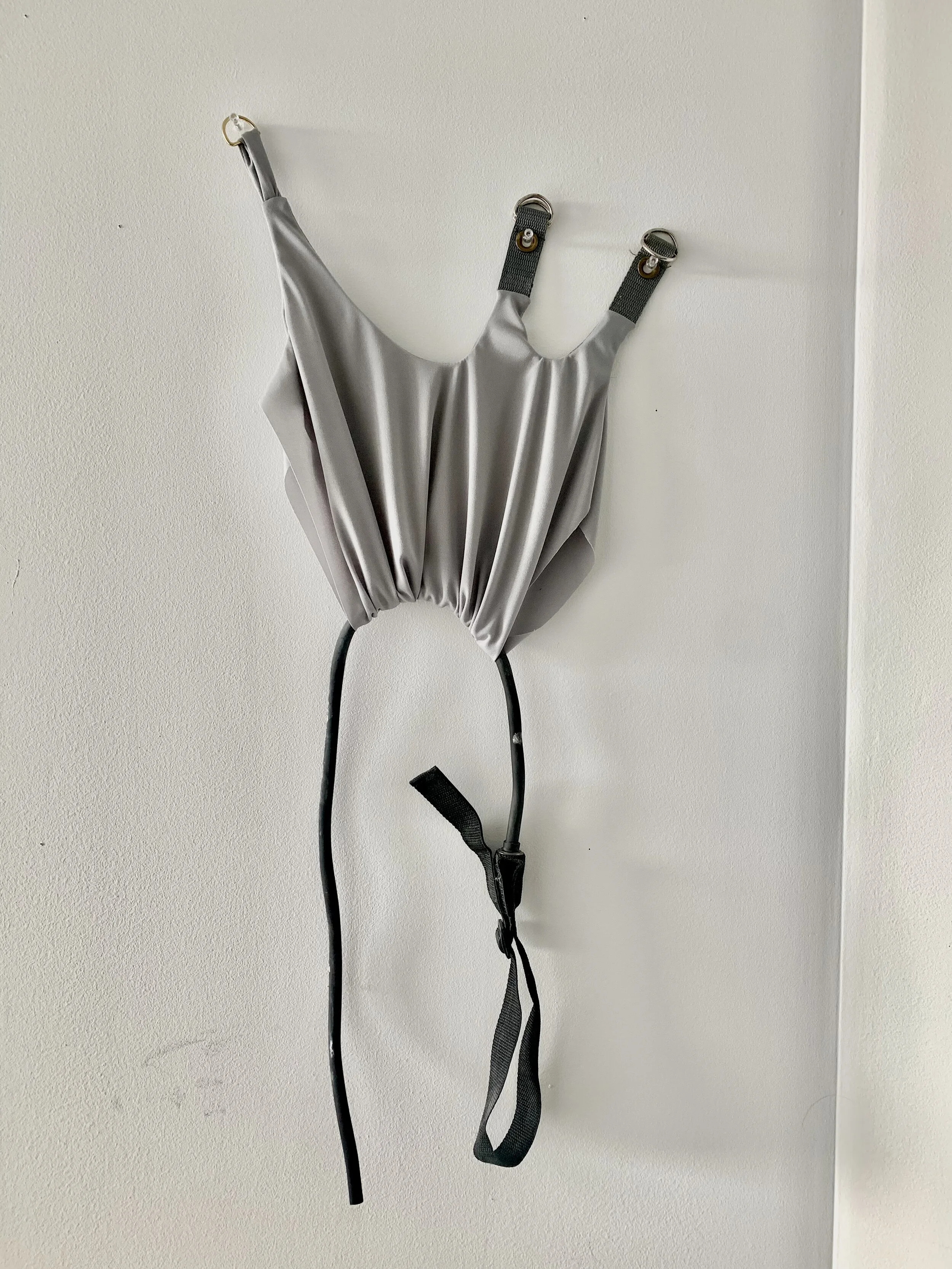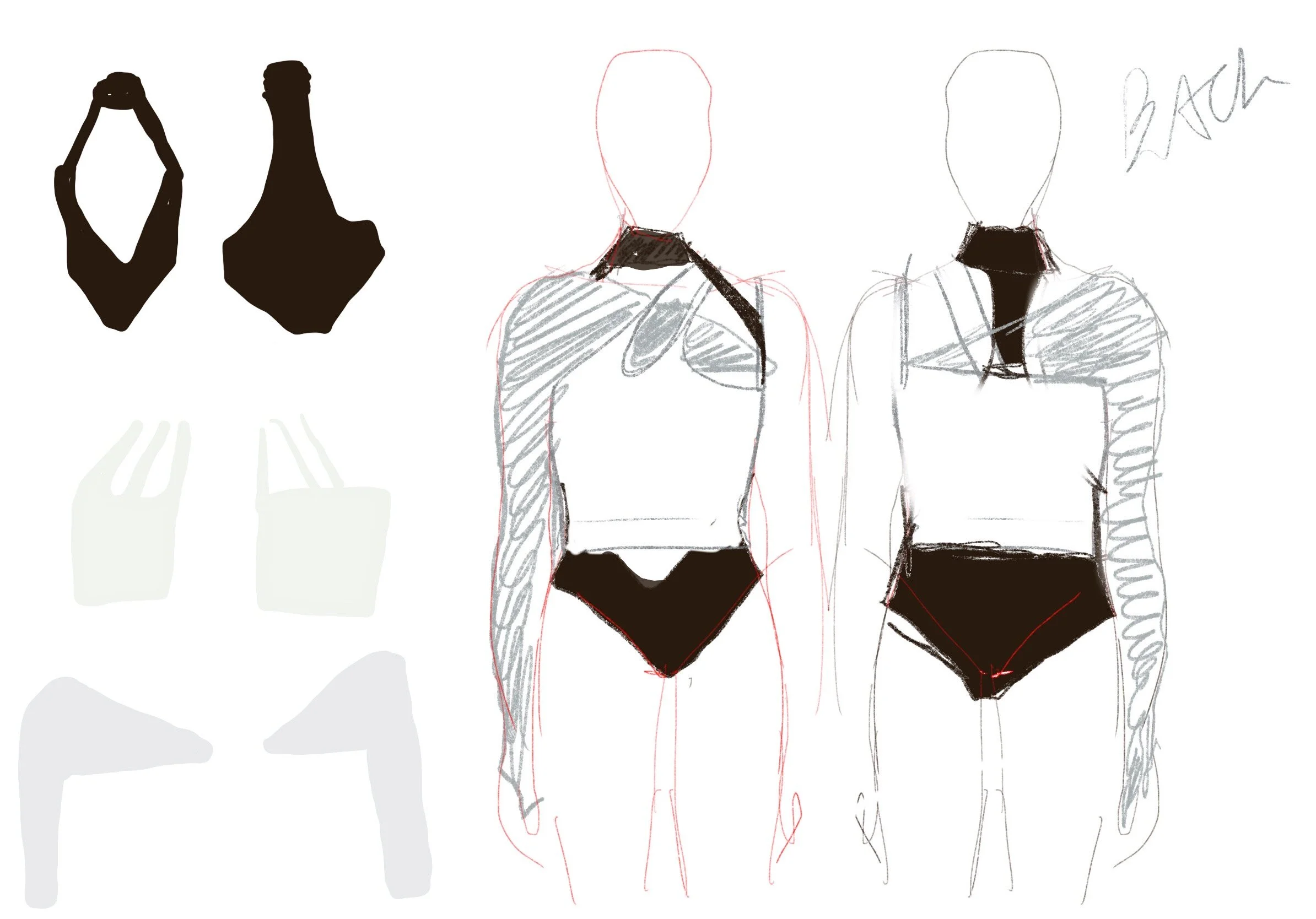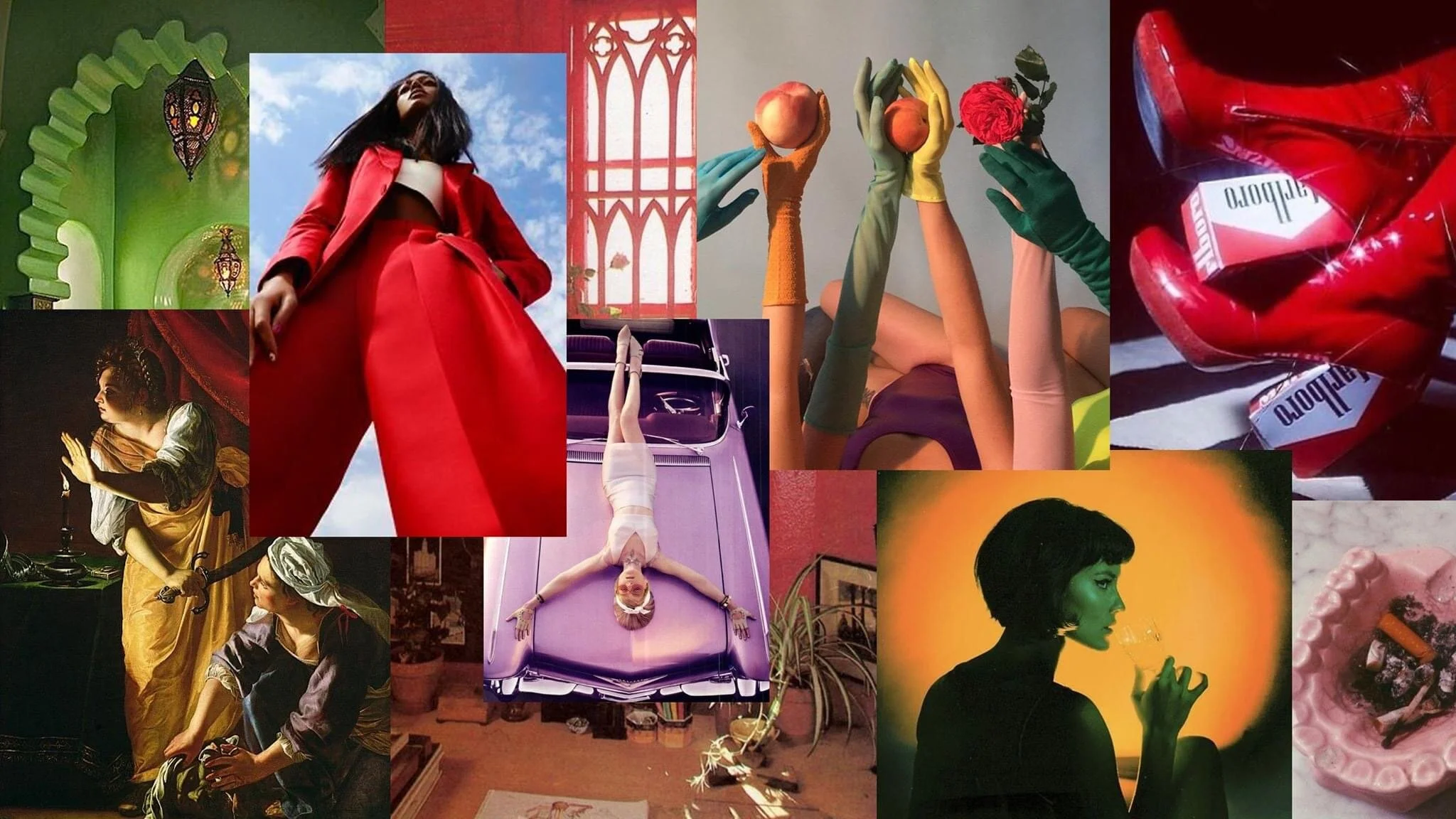This week I got the pleasure of getting to know William and his collection a little better. William is a first year at the College, studying economics, sociology, and architectural studies. He loves to listen to music, play guitar, and learn random skills. Here’s a little about William’s designs and inspiration:
Give me the rundown of your designs this year:
For my first look, I wanted to create something that I thought could be practical to wear. I have always been a fan of oversized tailoring so I would be remiss to not include that. I wanted it to focus on shapes – bold shoulders, flowy bottom, and now round bishop sleeves!
For the second design, I wanted to be a bit more experimental in terms of practicality. I have always wanted to make a collarless sort of robe made from wool, and I thought this would have been a great time. I also really wanted to experiment with pleating because I love wide-leg trousers.
For the last look, to say the least, the design was completely changed. Amid making my first few pieces, I wanted to focus on an exaggerated form while paying a sort of homage to some of my favorite designers, namely Rei Kawakubo! It will be a little bit of a surprise…
Mood board
What inspires you? How does this reflect in your collection?
Outside of a formal academic setting, I am interested in architecture and interior design, and I think many elements in those fields can be translated into fashion: proportions, functionality, form, materiality, meticulous attention to details and constructions, among others. Namely, I wanted to play with and put an emphasis on proportions throughout my collection.
There are also definitely a few designers who inspire me, such as Yohji Yamamoto and Ann Demeulemeester. Their prominences in avant-garde and androgynous fashion definitely inspired a huge part of the aesthetics, as well as their respective design philosophies. I want my collection to appeal to both a male and female audience, similar to that of avant-garde designers. They tend to have a lot of layers and flowiness which should be apparent with my designs in person!
Design Sketches
Is there anything you wished you knew when you first started your collection this year?
How to sew on buttons and make button holes with a machine well. As simple as it is supposed to be, I spent an unnecessary amount of time doing this :’)
Who do you imagine when designing?
My dad — he is really good at planning meticulously and has an incredible work ethic. At the same time, he tells me to adapt and not worry too much whenever mistakes happen. I have learned that beauty lies within imperfections and to show off the failures and mistakes. And I think my approach to design crystallizes this ideology.
One of William’s inspirations: Yohji Yamamoto
What has been your biggest challenge this year so far?
Living in a double room in Woodlawn, I found it hard to make patterns or cut fabric comfortably while trying to be precise. I would have to do this all on the floor with my back hunched. I also like to keep my room neat and clean, so I would also vacuum the floor everytime I finish cutting fabric.
all images provided by William Hu

